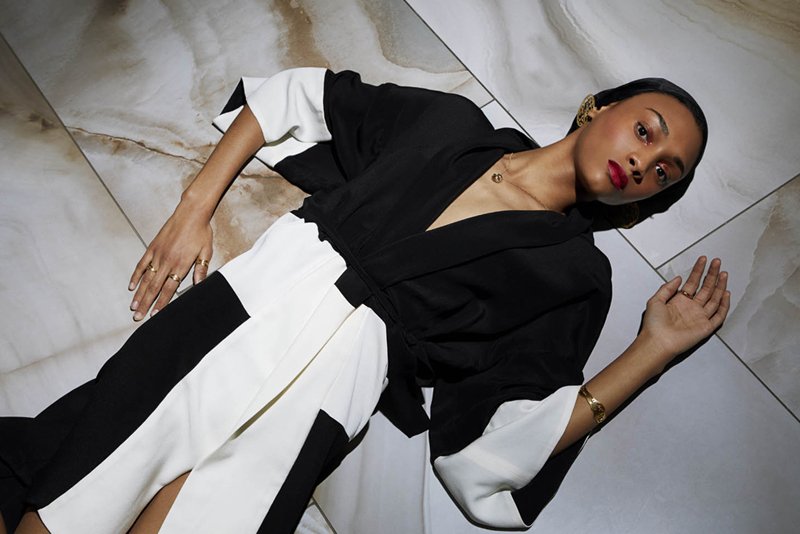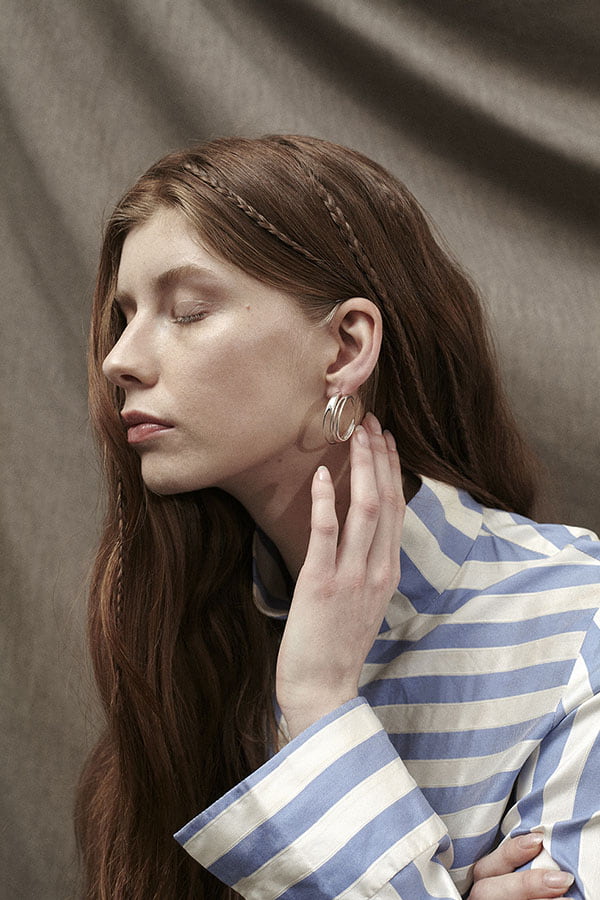
Olivia Berthelot or the avant-garde of the kimono
Olivia Berthelot or the avant-garde of the kimono
Olivia Berthelot, the founder of Tremblepierre, is an artist at heart.
Traveling between Paris and Beirut, she finds inspiration in what surrounds her.
It was at her workshop that we met. During this interview, we learned, that she worked for major brands, where the name came from its brand, why she chose the kimono as a flagship and what binds it to AFFAIRE ÉTRANGÈRES.
” Who is Olivia Berthelot?
It’s me (laughs). I am the creator of the Tremblepierre brand. I have a training as a stylist-modeller. I started my career working a lot in freelance, for traditional houses like Stéphane Rolland. I worked on exceptional pieces for princesses from the Middle East.
I travelled a lot during my career, it was interesting to meet clients like that. In parallel, I worked for more avant-garde creators, more innovative as Marine Serre or the brand “Clothes”. I worked mainly on the front parade.
Why give this name to your brand?
It’s a little weird. I have a lot to say. Basically, it’s a word that does not exist, that I created a long time ago, when I was 17 years old. It’s a bit like an adoptive family name. It does not make sense in itself but for me, it resonated like a mysterious word and quite classy. Tremblepierre represents the telluric and magical side of the stones in Brittany.
Why choose the kimono as a star piece?
Because it’s always been a bit of a fetish for me. I’ve always had vintage in my wardrobe, which I did not necessarily wear but I found beautiful. I wanted to start from a traditional garment that has a history, that already exists. I did not want to start from nothing.
The kimono has a cultural and historical richness but, I open myself to other pieces like the caftan, which integrates the collections. Before working in fashion, I started studying costume. I had done internships at the Opera, in theatre companies. For a long time, it was difficult to choose between fashion and costume.
The kimono to build my brand is a bit of a nod to the costume, the traditional clothing. Finally, it’s an internship for a fashion show that decided me. These are two ways to create completely different. The fashion is more technical, more pointed with a work of the cut. The costume is more of historical research, but it is less sharp than making collections.
I chose the kimono as the star piece but paradoxically, I’ve never been to Japan.
What are your sources of inspiration?
Travelling (spontaneously). Traveling makes me stand back, gives me ideas to create new things that appear in the field of vision and senses.
The craft of the world inspires me a lot, all that is embroideries, dyes, seeing the craftsmen work gives me ideas. The mixture of cultures is quite interesting.
At the moment, it is Lebanon that inspires me a lot, women of Lebanon, some women in particular, women that I meet in the street for example. And otherwise it’s quite spontaneous, it will depend. I’m going to an exhibition, I’m going to have lots of ideas seeing the colours that will make me want to create a dress with lots of colours for example. The artistic field inspires me. As for example a garment seen in the cinema that I may want to see differently.
Your brand is “labelled in Paris”, what does it change compared to a non-labelled house? And what does it change for the customers?
Not much in the end. For the customer, there is the recognized Parisian know-how, everyone knows through fashion. The perpetuated side, know-how, crafts not far from home, created by hand, limit the cost of transport.
Are your kimonos unisex? If not, is it in your projects?
I tried from the beginning to make a unisex range but I always fall back on the woman.
My kimonos are not created for men but can be worn by men. And I also have many men who come during events asking me for kimonos and like parts that are not originally created for them. Maybe it’s planned to make a real unisex capsule collection.
Do you wear your creations?
Yes, often enough. Not today but yes. At first, I did not wear them, it must have been something psychological that I cannot explain. For me it was not necessary that I touch, I was afraid to damage them because I spent time on it. I realized I had to wear them because people want to see me in one of my pieces.
Do you consider your brand as eco-friendly?
Every creator has a niche. I work upcycling. I do not produce materials for now, I recycle them. I make my creations in Paris so no transport. Reuse is pretty eco-friendly. This is important for me and it is one of the basic steps that is part of the main axes. I like not having the choice, being constrained and creating with what I find.
The up-cycling can be restrictive but I am finding a logistics to continue to work the up-cycling without being too constrained. Maybe to make a small capsule collection that will not be upcycled but will be made from eco-responsible natural materials, labelled, perhaps made in France.
Why did you choose AFFAIRE ÉTRANGÈRES to represent your brand?
When I met Eddy, I liked his project. I found that the image and the story he told through AFFAIRE ÉTRANGÈRES sounded great with Tremblepierre. The mix of culture, craft world but luxurious version, in high-end version and qualitative in terms of image. That’s what I like, it’s an aspect that I want to develop through the brand. ”
Interview by Apolline PRULHIERE.
